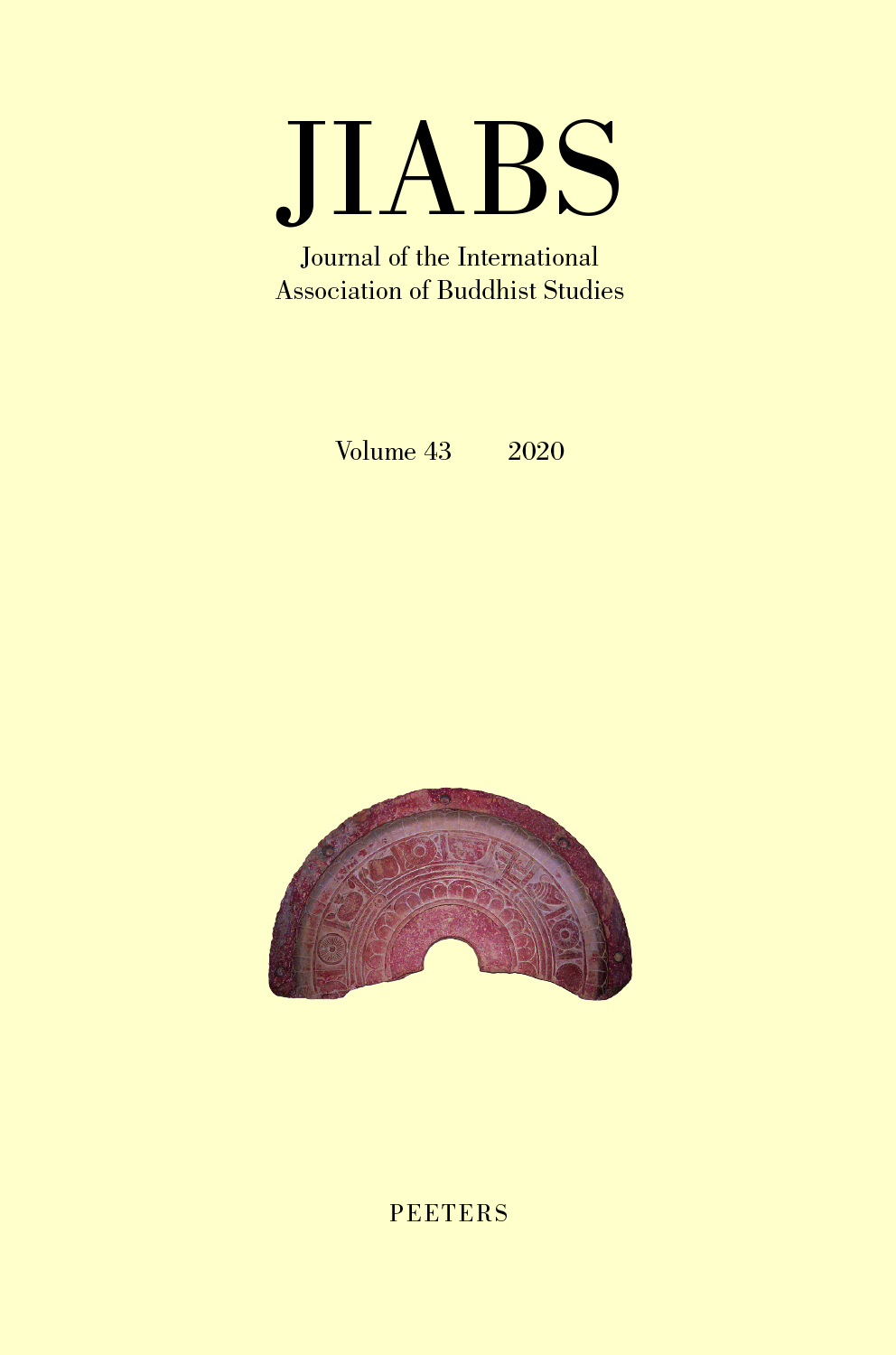 previous article in this issue previous article in this issue | next article in this issue  |

Preview first page |
Document Details : Title: Negotiating the Absence of Ritual Subtitle: Dzogchen in the Tantric Manuscripts of Dunhuang and Beyond Author(s): ESLER, Dylan Journal: Journal of the International Association of Buddhist Studies Volume: 44 Date: 2021 Pages: 409-440 DOI: 10.2143/JIABS.44.0.3290298 Abstract : Although the contemplative approach of Dzogchen (Tib. rdzogs chen) occupies a prominent position in the Nyingma (Tib. rNying ma) (and indeed Bon) tradition, where it is considered to be the pinnacle of vehicles leading to enlightenment, its origins are not quite clearly understood. Several scholars have suggested that it may have emerged from the tantric matrix of Mahāyoga ritual, before gradually developing into an independent contemplative approach characterised, especially in its early phases, by the absence of tantric ritual. Some of the manuscripts recovered at Dunhuang (敦煌) reflect this tension. This paper will examine and compare three thematic groups of Dunhuang manuscripts: (a) IOL Tib J 437 and a text comprising Pelliot tibétain 353 and IOL Tib J 507, which use the term rdzogs chen within the context of Mahāyoga ritual practice; (b) IOL Tib J 454 (= Madhusādhu’s instructions) and IOL Tib J 470 (= the rDo rje sems dpa’i zhus lan), which do not make prominent use of the term rdzogs chen itself, yet provide a contemplative framework for Mahāyoga that rhetorically challenges some of the more ritualistic concerns of this approach; and (c) IOL Tib J 594 (= the sBas pa’i rgum chung) and IOL Tib J 647 (= the Rig pa’i khu byug), which present Dzogchen very much in line with the early 'mind orientation' (Tib. sems phyogs). Reference will also be made to several unstudied Dzogchen commentaries by Nupchen Sangyé Yéshé (ca. 844 to mid-10th c., Tib. gNubs chen Sangs rgyas ye shes), a highly significant figure in the formation of the Nyingma school, for by reflecting on (near-)contemporaneous developments in other parts of the Tibetan cultural world, we can observe that these Dunhuang manuscripts bear witness to a wider process of negotiating the absence of ritual as a means to demarcate a doxographical space. Since an important subject of the article is the difference articulated between Mahāyoga and Dzogchen, the transcendence-immanence distinction will be used as a relational axis against which such varying paradigms of Tantric Buddhist praxis can be analysed. |
 |


